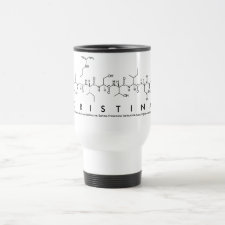
Authors: Baggiani C, Giovannoli C, Anfossi L, Passini C, Baravalle P, Giraudi G
Article Title: A Connection between the Binding Properties of Imprinted and Nonimprinted Polymers: A Change of Perspective in Molecular Imprinting.
Publication date: 2012
Journal: Journal of the American Chemical Society
Volume: 134
Issue: (3)
Page numbers: 1513-1518.
DOI: 10.1021/ja205632t
Abstract: In the current paradigm for molecular imprinting, the imprinted binding sites exist as a consequence of the polymerization process around templates, and the properties of nonimprinted polymers (NIPs) have largely been overlooked. Thus, nothing can be affirmed a priori concerning the binding properties of NIPs. We propose an alternative view where the imprinting effect is due to the presence of a template molecule that enhances the pre-existing binding properties of a polymer. If a NIP shows no binding properties toward a target molecule, the corresponding imprinted polymer (MIP) will show a weak imprinting effect. On the other hand, if a NIP shows binding properties toward a target molecule, the corresponding MIP will show a significant imprinting effect. To verify this hypothesis, we prepared a 96-member combinatorial polymeric library in the absence of any template molecule. This library was screened for several potential ligands, and with no exceptions, the composition of the best-binding NIP produced a MIP with excellent binding properties, whereas a low-binding NIP formulation produced a MIP with comparable low binding. To validate these results, the binding properties toward naproxen and ibuprofen were measured for two combinatorial libraries of polymers prepared in the presence (MIP library) and the absence (NIP library) of the template molecule. The experiment's results showed a correlation between the apparent affinity constants measured for the NIP and MIP libraries, confirming the proposed hypothesis. Moreover, for closely related molecules, it was shown that binding selectivity is an emergent property derived from the imprinting process and not a property of NIPs.
Template and target information: naproxen, ibuprofen



Join the Society for Molecular Imprinting

New items RSS feed
Sign-up for e-mail updates:
Choose between receiving an occasional newsletter or more frequent e-mail alerts.
Click here to go to the sign-up page.
Is your name elemental or peptidic? Enter your name and find out by clicking either of the buttons below!
Other products you may like:
 MIPdatabase
MIPdatabase









